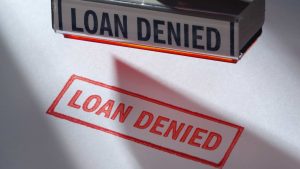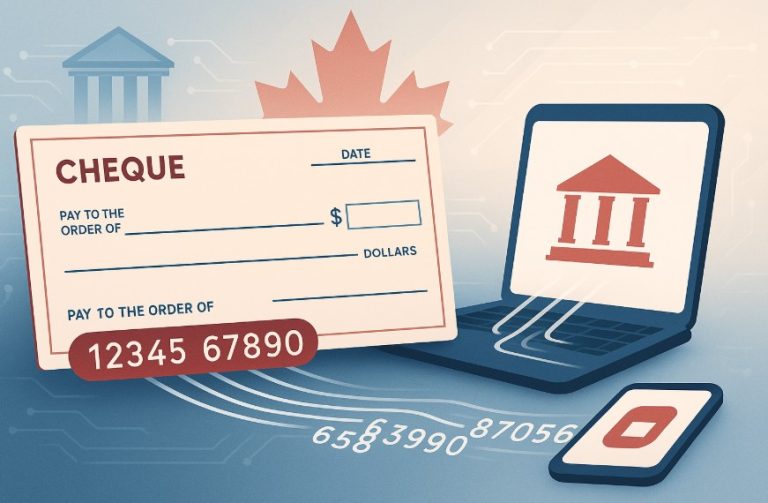Are you considering a line of credit but unsure how to secure approval? Whether you’re looking to cover unexpected expenses, finance a big purchase, or consolidate debt, understanding the application process is key.
In Canada, lenders assess factors like credit score, income stability, and debt-to-income ratio to determine your eligibility. How do these factors affect your chances, and what steps can you take to strengthen your application?
What happens if your application is denied, and are there alternatives available? This guide answers all your questions, offering practical tips to navigate the process successfully. By the end, you’ll have a clear roadmap to improve your chances of approval and make the most of this financial tool.
What Is a Line of Credit?

A line of credit is a flexible borrowing option that allows you to access funds up to a pre-approved limit. Unlike traditional loans that provide a lump sum, you can draw funds as needed and pay interest only on the amount you use. This structure makes it ideal for managing irregular or ongoing expenses such as home renovations, emergencies, or consolidating high-interest debt.
In Canada, lines of credit are categorized as either secured or unsecured. Secured lines require collateral, such as a property or savings, offering lower interest rates due to reduced lender risk.
Conversely, unsecured lines don’t require collateral but often come with higher rates. Lines of credit provide financial flexibility with variable repayment options, allowing borrowers to manage their finances more effectively compared to other loan types.
How Does a Line of Credit Work in Canada?

In Canada, a line of credit functions similarly to a credit card, providing access to funds up to a set limit. Borrowers can withdraw money as needed and make minimum payments or repay larger amounts to reduce interest costs. Most lines of credit feature variable interest rates tied to the prime rate, meaning costs can fluctuate.
Eligibility depends on factors like income, credit score, and debt levels. Secured lines of credit, such as a Home Equity Line of Credit (HELOC), are backed by collateral and offer better terms, while unsecured lines rely solely on the borrower’s creditworthiness.
Repayment is flexible, as interest applies only to the used portion of the credit, making this an attractive option for ongoing or unpredictable expenses. Understanding these mechanics helps borrowers decide if a line of credit suits their financial needs.
Why Is Your Credit Score Crucial for Line of Credit Approval?

Your credit score plays a vital role in determining your eligibility for a line of credit in Canada. Ranging from 300 to 900, it reflects your creditworthiness and indicates how likely you are to repay borrowed money. A high score signals financial responsibility, increasing your chances of approval and potentially securing lower interest rates.
Credit scores in Canada are calculated by major bureaus like Equifax and TransUnion based on factors such as payment history, credit utilization (ideally below 30%), length of credit history, types of credit used, and hard inquiries.
Higher credit scores offer benefits like lower interest rates, higher approval odds, and larger credit limits. A score above 660 is generally good, with 750+ considered excellent.
To improve your score, focus on paying bills on time, reducing outstanding debt, and reviewing your credit report for errors. Avoid opening multiple accounts in a short period, as this can lower your score.
Credit score ranges and their implications include:
- 800–900 (Excellent): Best interest rates, very high approval likelihood.
- 660–799 (Good): Competitive interest rates, likely approval.
- 560–659 (Fair): Higher interest rates, may qualify but with stricter terms.
- 300–559 (Poor): Unlikely to qualify without significant credit improvement.
Proactively enhancing your score ensures stronger financial options and better loan terms.
How Do Income and Employment Status Affect Your Application?

Your income and employment status are crucial in determining your eligibility for a line of credit in Canada. Lenders assess your financial stability to ensure you can manage repayments alongside other obligations.
A steady income and stable employment history demonstrate reliability and reduce lender risk, increasing approval odds. Frequent job changes or unemployment periods may signal instability and affect your chances.
Lenders evaluate your gross monthly income, job tenure, and debt-to-income ratio (ideal below 40%). Higher incomes often lead to larger credit limits, while stable employment strengthens your profile.
Required documents include pay stubs, employment letters, tax returns, and bank statements. Self-employed applicants should show consistent earnings, business profitability through financial statements, and savings to handle income fluctuations.
| Employment Type | Documentation Needed | Impact on Approval |
|---|---|---|
| Full-Time | Pay stubs, employment letter | Higher likelihood |
| Part-Time | Proof of consistent income | May require guarantees |
| Self-Employed | Tax returns, financial records | Longer review but possible |
Strengthen your application by organizing documents, reducing debt obligations, and avoiding job changes before applying. A solid financial profile and clear documentation significantly improve your chances of approval for a line of credit.
What Role Does Your Debt-to-Income Ratio Play in Approval?

The debt-to-income (DTI) ratio is a key metric that lenders use to evaluate your financial health and determine your eligibility for a line of credit.
It measures the proportion of your gross monthly income that goes toward debt payments. A lower DTI ratio suggests you have sufficient income to manage additional credit, with lenders in Canada typically favouring a ratio of 40% or less.
The formula for calculating DTI is straightforward:
DTI=(Total Monthly Debt Payments÷Gross Monthly Income)×100
For example, if your monthly debt payments total $2,000 and your gross income is $5,000, your DTI is 40%.
| DTI Range | Assessment | Implication for Approval |
|---|---|---|
| 0%–30% | Excellent | High approval likelihood, best terms. |
| 31%–40% | Good | Likely approval, moderate terms. |
| 41%–50% | Moderate | Possible approval, higher rates. |
| Above 50% | Poor | Low likelihood of approval. |
To improve your DTI, focus on paying down existing debts, increasing income through side jobs or raises, and avoiding new financial commitments. A lower DTI, combined with stable income and a strong credit history, boosts your approval odds and may qualify you for better credit limits and terms.
Is Collateral Necessary for Securing a Line of Credit?

Collateral is required only for secured lines of credit, where an asset like a home, vehicle, or investment is pledged to guarantee repayment. Secured lines often offer lower interest rates and higher credit limits due to reduced lender risk. Unsecured lines, in contrast, do not require collateral but generally come with higher interest rates and lower credit limits.
| Feature | Secured Line of Credit | Unsecured Line of Credit |
|---|---|---|
| Collateral Required | Yes | No |
| Interest Rates | Lower | Higher |
| Credit Limit | Higher | Lower |
| Risk to Borrower | Higher (asset at stake) | Lower (no asset risk) |
The advantages of secured credit include easier approval and favourable terms, especially if you have a lower credit score or income. However, offering collateral carries risks like asset seizure if you default.
This option suits borrowers seeking better terms and willing to pledge assets, while unsecured lines are ideal for those who value flexibility and want to avoid risking personal property.
To secure the best terms, assess your ability to pledge collateral, negotiate with lenders, and compare offers across institutions. Choosing between secured and unsecured options depends on your financial goals and risk tolerance.
How Can You Choose the Right Financial Institution for Your Line of Credit?

Choosing the right financial institution for a line of credit in Canada requires careful evaluation of factors such as interest rates, fees, and terms. Compare banks, credit unions, and online lenders to identify the best fit for your financial needs.
Banks offer established reputations and competitive rates, credit unions provide personalized service and flexibility, and online lenders boast faster applications but may have higher rates.
Key considerations include interest rates, additional fees, repayment flexibility, and the application process. Assess eligibility requirements for credit score and income to align with the lender’s criteria. Use tools like online calculators to compare long-term borrowing costs and request quotes from multiple institutions.
| Institution Type | Key Features |
|---|---|
| Banks | Competitive rates, established trust |
| Credit Unions | Flexible terms, community-focused |
| Online Lenders | Quick applications, higher rates |
Building a strong relationship with a lender through consistent transactions and prior loans can improve your chances of securing favourable terms. A thorough comparison ensures you select an institution tailored to your financial goals.
What Are the Steps to Apply for a Line of Credit in Canada?

Applying for a line of credit in Canada involves several steps, from preparing your financial documents to submitting your application and receiving approval. Understanding the process can help you avoid common pitfalls and increase your chances of a successful outcome.
Step 1: Assess Your Financial Readiness
Before applying, evaluate your financial situation to determine if a line of credit is the right option. Consider the following:
- Your Credit Score: Check your score with Equifax or TransUnion to ensure it meets lender requirements. A score above 660 is generally favourable.
- Debt-to-Income Ratio: Ensure your ratio is below 40% to improve approval odds.
- Purpose of the Credit: Be clear on why you need the funds and how you will use them.
Step 2: Research and Compare Lenders
Not all lenders offer the same terms, so it’s crucial to compare your options. Look into:
- Interest Rates: Determine if the rates are fixed or variable and how they impact repayment.
- Credit Limits: Consider which lender can offer the limit you need.
- Customer Reviews: Read reviews about the lender’s customer service and ease of application.
Step 3: Gather Required Documents
Lenders will ask for documentation to assess your eligibility. Common requirements include:
- Identification (e.g., passport, driver’s licence).
- Proof of income (e.g., pay stubs, tax returns, or bank statements).
- Employment verification (e.g., letter from employer or contract).
- Credit history report (often requested directly by the lender).
Step 4: Submit Your Application
You can typically apply for a line of credit in two ways:
- Online: Many banks and lenders offer quick online applications, requiring you to upload your documents digitally.
- In-Person: Some borrowers prefer visiting a branch to discuss their options directly with a financial advisor.
During the application process, the lender will review your financial profile, credit history, and repayment ability.
Step 5: Await Approval
Once your application is submitted, the lender may take a few days to weeks to process it. They may contact you for additional information or clarification. Approval depends on:
- Your credit score and financial health.
- The lender’s specific requirements.
Step 6: Review and Accept the Offer
If approved, the lender will provide the terms of your line of credit, including:
- Credit limit.
- Interest rate.
- Repayment terms and fees.
Take the time to carefully review the terms before signing. If anything is unclear, don’t hesitate to ask for clarification.
Step 7: Start Using Your Line of Credit
Once the agreement is signed, you can access funds up to the approved limit. Keep in mind:
- You only pay interest on the amount you use, not the full credit limit.
- Make timely payments to avoid penalties and maintain your credit score.
Comparison of Application Methods
| Application Method | Advantages | Disadvantages |
|---|---|---|
| Online | Fast, convenient, available 24/7. | May lack personalized guidance. |
| In-Person | Personalized support from advisors. | Requires time and a physical visit. |
By following these steps, you can navigate the application process with confidence. Proper preparation, research, and attention to detail can significantly increase your chances of approval while ensuring you secure the best possible terms for your financial situation.
How Can You Increase Your Chances of Approval?

Improving your financial profile is key to securing approval for a line of credit in Canada. Focus on enhancing your credit score by paying bills on time, reducing credit usage to under 30%, and disputing errors in your credit report.
Lower your debt-to-income ratio by paying down high-interest debts and avoiding new financial commitments. Organize documents like pay stubs, tax returns, and bank statements to ensure a smooth application process. For self-employed individuals, include financial records like profit and loss statements.
Building a relationship with the lender, such as opening accounts or consulting their financial advisors, can also improve approval odds. If applicable, consider a secured line of credit by offering collateral to reduce lender risk. Avoid applying when your credit score is low or submitting multiple applications simultaneously, as this can hurt your profile.
| Factor to Improve | Action Plan | Benefit |
|---|---|---|
| Credit Score | Pay bills on time, reduce usage | Better rates, approval. |
| Debt-to-Income Ratio | Pay off debt, increase income | Higher credit limits. |
| Documentation | Organize records | Faster approval process. |
A proactive and organized approach ensures you present yourself as a reliable borrower and secure favourable terms.
What Should You Do If Your Application Is Denied?

If your application for a line of credit is denied, understanding the reasons is key to improving your chances next time. Common causes include a low credit score, high debt-to-income ratio, insufficient income, or errors in your application.
Review the lender’s feedback and check your credit report for inaccuracies, disputing any errors with credit bureaus like Equifax or TransUnion.
Take corrective actions such as paying bills on time, reducing debt, and avoiding new credit inquiries to enhance your credit score.
Stabilize your income by securing consistent employment or supplementing it with additional sources. If immediate financing is needed, consider alternatives like secured lines of credit, personal loans, or lower-limit credit cards.
When reapplying, choose a lender with requirements that better match your financial profile. Prepare all necessary documentation and demonstrate improvements in your financial health. By addressing issues proactively, you can strengthen your application and increase your approval odds.
| Reason for Denial | Solution |
|---|---|
| Low Credit Score | Improve payment history, reduce debt. |
| High Debt-to-Income Ratio | Pay off debt, increase income. |
| Insufficient Income | Secure stable employment. |
| Application Errors | Review and correct documentation. |
Conclusion
Securing a line of credit in Canada requires careful preparation and a strong understanding of the process. By maintaining a good credit score, managing your debt-to-income ratio, and selecting the right lender, you can increase your chances of approval.
Whether you opt for a secured or unsecured line of credit, ensure that you meet the lender’s requirements and have a clear plan for repayment. If your application is denied, take proactive steps to improve your financial profile and explore alternative options.
A line of credit can be a valuable financial tool when used responsibly, offering flexibility and convenience for various expenses. With the right approach, you can confidently navigate the process and make informed decisions for your financial future.
FAQs About Lines of Credit in Canada
What is the typical interest rate for a line of credit in Canada?
The interest rate typically ranges between 4% and 10%, depending on whether the credit is secured or unsecured.
Can newcomers to Canada apply for a line of credit?
Yes, newcomers can apply, but they may need a good credit history or a co-signer to qualify.
How does a line of credit differ from a personal loan?
A line of credit offers flexible borrowing, while a personal loan provides a fixed lump sum with set repayments.
Are there fees associated with maintaining a line of credit?
Some lines of credit may have annual fees or account maintenance charges based on the lender’s terms.
How does a line of credit impact my credit score?
It can positively affect your score if managed responsibly, but late payments may damage it significantly.
Can I convert my line of credit into a term loan?
Yes, some lenders allow this option to lock in a fixed interest rate and structured repayment plan.
What happens if I miss a payment on my line of credit?
Missed payments can lead to penalty fees, increased interest rates, and a negative impact on your credit score.




